This DIY modular synth system is very much in the "Lunneta" style. Steve Lunetta was a man I never met but who seems cool who was really interested in abusing CMOS logic chips to make sounds from them. It turns out this is a really great way to have a lot of fun making a horrible racket without spending much money. If you want 1V/Octave tracking, temprature compensation and other things that make tonal music possible, you are going to be dissapointed. If you want to make sounds like a dying cyborg trapped in a meat grinder then you are in the right place!
Panels are for eurorack size blanks - 3U tall and some multiple of HP wide.
The banana jacks are color-coded for easy patching – consult article #000 for more in-depth explanations:
- Red - output
- Black - primary (data/audio) input
- Yellow - CV input
- Blue - Clock input
- Green - Trigger input
- White - Gate input
Every article contains a schematic, a perfboard layout, a drill template for a eurorack sized panel, as well as an explanation and analysis of the circuit. Everything runs off a simple 9-12V DC wall-wart type adaptor, and outputs signals that range from 0-5V.
Though I have designed these to be beginner friendly, I reccomend you first know how to read a schematic and how to lay out and build something on perfboard as well as on a breadboard. Neither of these are tough though, so don't worry! You can also definitely use these projects to learn about all of those things, but ultra-simple projects to get your feet wet might make things go smoother. Also, don't expect everything to go right the first time. Hunting down your mistakes and fixing them till everything gets right is part of the fun! Have patience!
New modules come as fast as I can make them (there is a long to-do list!) but the modular generally takes a back seat to other, bigger projects so progress can be sporadic
 Castle Rocktronics
Castle Rocktronics
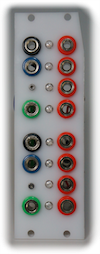
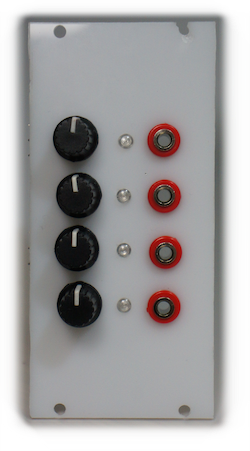
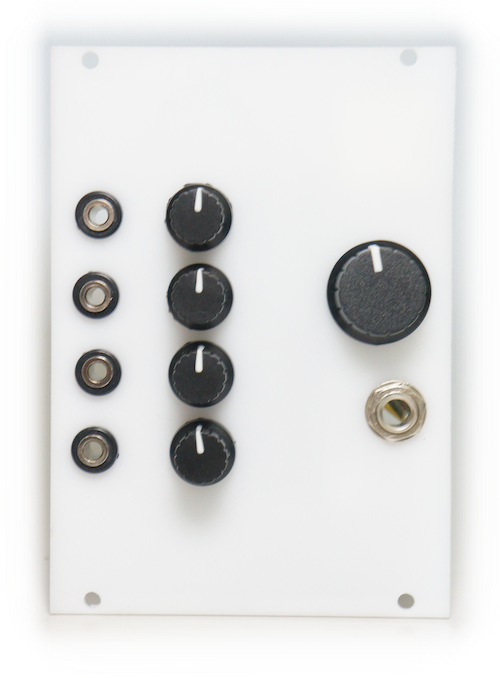
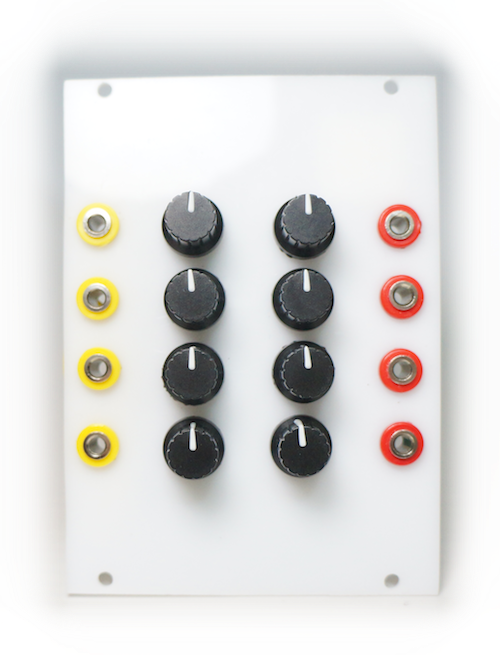
 The only module you will use 100% of the time. It's slightly dishonest to call it a power supply though, as really you use a DC wall-wart as the power supply, this is just a switch, an LED and a bus board. It uses generic connectors DIP spaced connectors (XH-2.54 type) to allow for easy attachment and detachment of modules for rearranging. There is a fuse so you can ignore current draw till it blows and then be thankful you had a fuse since you weren't tracking current draw (it's very low though). Also includes a daisy-chain output for powering guitar stompboxes off the same power supply and an external ground connection for interfacing with other synths and gear.
The only module you will use 100% of the time. It's slightly dishonest to call it a power supply though, as really you use a DC wall-wart as the power supply, this is just a switch, an LED and a bus board. It uses generic connectors DIP spaced connectors (XH-2.54 type) to allow for easy attachment and detachment of modules for rearranging. There is a fuse so you can ignore current draw till it blows and then be thankful you had a fuse since you weren't tracking current draw (it's very low though). Also includes a daisy-chain output for powering guitar stompboxes off the same power supply and an external ground connection for interfacing with other synths and gear.
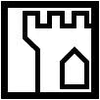
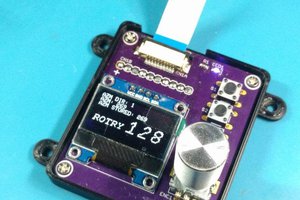
 CriptasticHacker
CriptasticHacker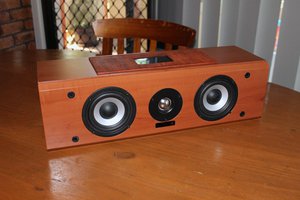
 ronald
ronald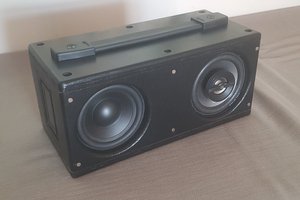
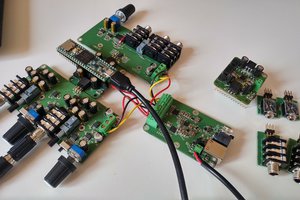
 Michele Perla
Michele Perla
Hi there,
Module 04 on shift registers PDF link doesnt seem to be working. It redirects me to an image of the panel.
Any chance of fixing this?
Thanks.